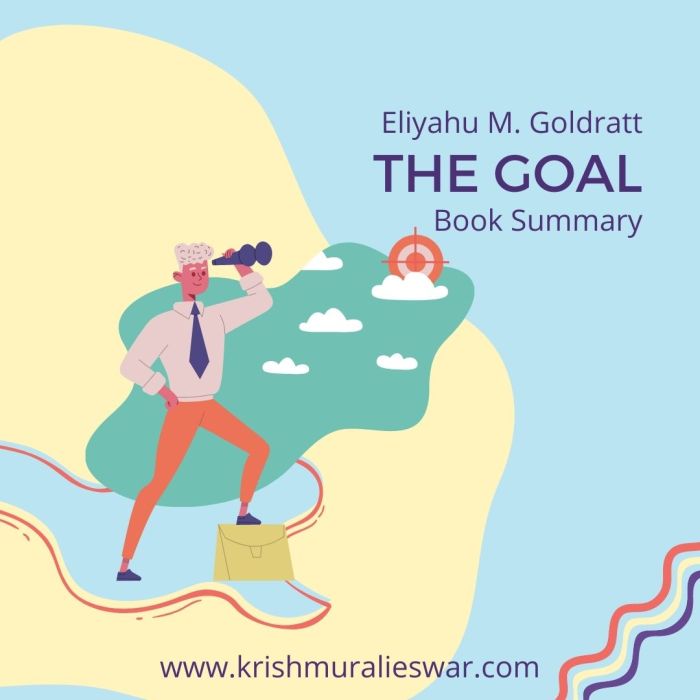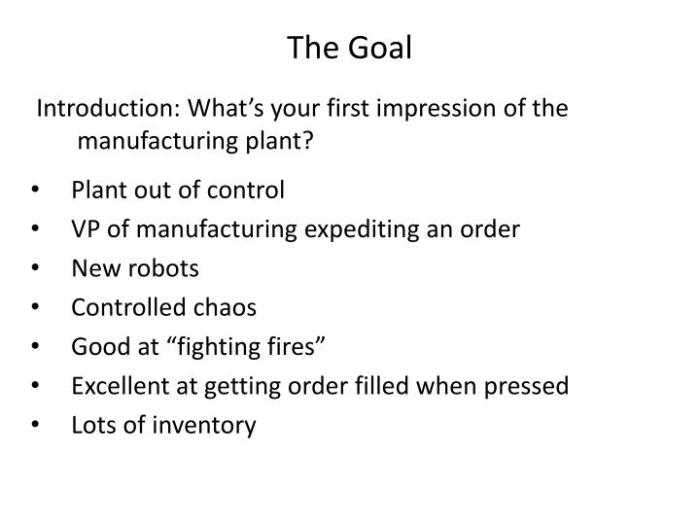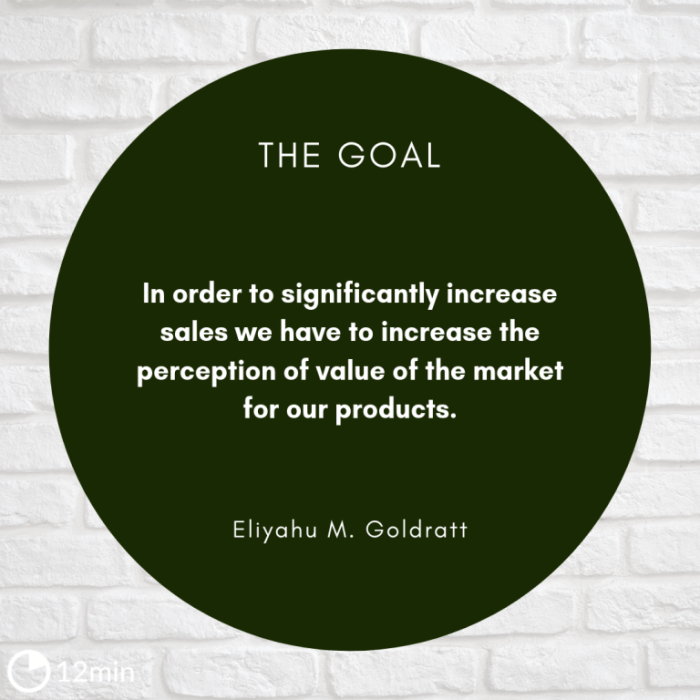The Goal Eliyahu Goldratt Chapter Summary presents a captivating overview of the Goal Process, a revolutionary approach to operations management developed by Eliyahu Goldratt. This chapter summary delves into the key concepts, applications, and impact of the Goal Process, providing a roadmap for organizations seeking to improve performance and profitability.
Goldratt’s Goal Process is a systematic methodology that focuses on identifying and managing constraints to maximize throughput. Through a series of five steps, organizations can optimize their operations, reduce waste, and achieve their ultimate goals.
Chapter Overview

This chapter introduces the Goal Process, a systematic approach to achieving operational excellence. It emphasizes the importance of identifying and managing constraints to maximize throughput and profitability.
The Goal Process is a key concept in Eliyahu Goldratt’s Theory of Constraints (TOC), which revolutionized the field of operations management.
The Goal Process
The Goal Process consists of five steps:
- Identify the system’s constraint
- Decide how to exploit the constraint
- Subordinate everything else to the above decision
- Elevate the constraint
- If in the previous steps a constraint has been broken, go back to step 1 (but do not allow inertia to cause a system’s constraint)
Each step contributes to the ultimate goal of increasing throughput and profitability.
Constraints and Throughput: The Goal Eliyahu Goldratt Chapter Summary

A constraint is anything that limits the system’s ability to achieve its goal. Throughput is the rate at which the system produces goods or services.
Identifying and managing constraints is crucial because they determine the overall performance of the system. By focusing on improving the constraint, organizations can increase throughput and profitability.
Case Study: Eliyahu Goldratt
Eliyahu Goldratt was a renowned physicist and management consultant who developed the Theory of Constraints. His case study in this chapter illustrates the principles of the Goal Process.
Goldratt helped a manufacturing plant identify its constraint and implement a solution that significantly increased throughput and profitability.
Applications and Impact

The Goal Process has wide applications in various industries, including manufacturing, healthcare, and software development.
Organizations that have implemented the Goal Process have experienced significant improvements in:
- Throughput
- Profitability
- Operational efficiency
- Customer satisfaction
Challenges and Limitations

Implementing the Goal Process can be challenging. Some potential challenges include:
- Identifying the true constraint
- Gaining buy-in from stakeholders
- Overcoming inertia and resistance to change
Despite these challenges, the Goal Process has proven to be a valuable tool for organizations seeking to improve their performance.
Q&A
What is the Goal Process?
The Goal Process is a five-step methodology developed by Eliyahu Goldratt to identify and manage constraints in order to maximize throughput and achieve organizational goals.
What are the key benefits of implementing the Goal Process?
Implementing the Goal Process can lead to reduced waste, improved efficiency, increased throughput, and enhanced organizational performance.
What are some common challenges in implementing the Goal Process?
Potential challenges include resistance to change, lack of understanding, and difficulty in identifying constraints.